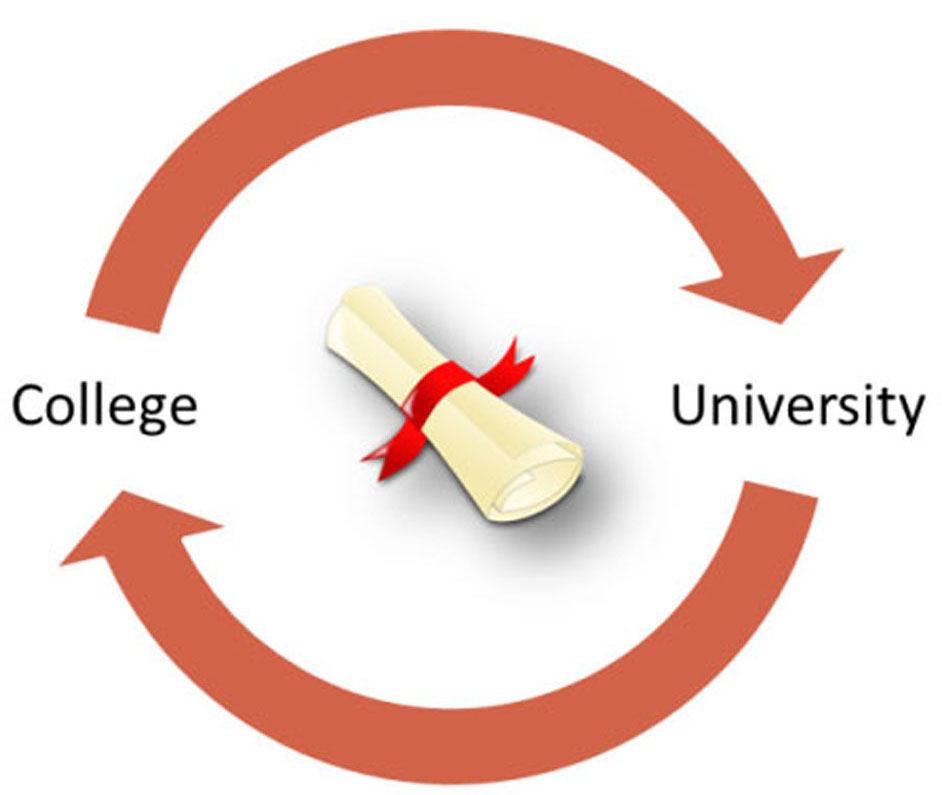 |
| http://www.floridacollegeaccess.org/wp-content/uploads/2013/02/ReverseTransferHUGE.jpg |
The appeal of transferring from a junior college to a large university
There are a few obvious reasons why some students choose to go to community college before transferring to a 4-year institution. One of the main reasons being the financial incentive. Students are able to save a significant amount of money by taking the lower level classes at their local community college. Not only is community college cheaper, but most students live at home and commute to class which saves on housing. Another reason is that community college offers more flexible schedules and more online classes due to the fact that more students who attend also have jobs or are older and have families.
Social problems transfers often encounter after transferring
One of the common problems that transfer students encounter after entering 4 year institutions during their junior year is the common misconception that it is easier to get in as a transfer student than it is as a freshman.
A study was done at the University of California Berkeley that asked transfer students questions about their experience after coming from community college to a major state school such as UC Berkeley. Some of the results of the study:
- 26.5% of respondents reported experiencing rejection from other students as a result of being a transfer student
- 18.8% of respondents reported that they concealed being a transfer student at least once in the past
How Students Felt When They Shared or Didn't Share Their Transfer Student Status
Rejection:
No
|
Rejection:
Yes
|
|
Concealment:
No
|
75.4%
|
24.6%
|
Concealment:
Yes
|
32.3%
|
67.7%
|
Professors perceptions of transfer students are mixed
In the study it was found that transfer students also experience the same kind of difficulties with professors as they do with other students. Students responded with situations where their professors talked negatively about the professors at the nearby community college and attributed any difficulty the student was having a result of poor preparation.
On the other hand, other students found that once their professors found out that they were transfer students, they made sure that the student felt welcomed at the school and offered extra help if they needed it.
Some Universities do not accept certain credits from community colleges
A common problem that students run into when making the transition from community colleges to Universities is transferring credits from one institution to another. There is no perfect system that guarantees a student's credits will transfer to exactly what they want them to at the next school because not all schools are the same.
The University of Maryland has a Transfer Credit Center which allows prospective students to enter their classes into the database and see what is the equivalent class at UMD. This helps students choose their classes at junior college according to what the University of Maryland accepts and does not accept.
The disadvantage that students are seeing comes when students try to transfer out of state to other universities. Not only is there no guarantee that every credit will transfer when a student moves schools, but if the school is a private University it can be even harder to prove that a course at an out of state community college is the equivalent to a course at their university.
Could taking courses at community college hurt your chances at graduate school?
Megan Forbes Cleaver is a transfer adviser at the University of Maryland. She meets with students who are looking to transfer to UMD. She gives advice to students on what classes they need to take in order to meet the University's requirements so that they can transfer. In her experience, the number of students that transfer students has actually decreased in the past few years.
A disadvantage that she has seen for transfer students comes when students apply to graduate and medical school.
Not everyone agrees that community college courses are easier, nor is there any data proving it. There is a preconceived notion that two year institutions have easier classes and therefore the student would not be prepared for the graduate school work. This is an alarming pattern that is being seen by students attempting to get into medical school. Having to re-take classes they have already completed is not only a waste of time but also a waste of money. Community college courses are generally cheaper than courses at major universities. If a student is having to take the same class over again, some can find themselves paying almost three times as much as they should have to.




